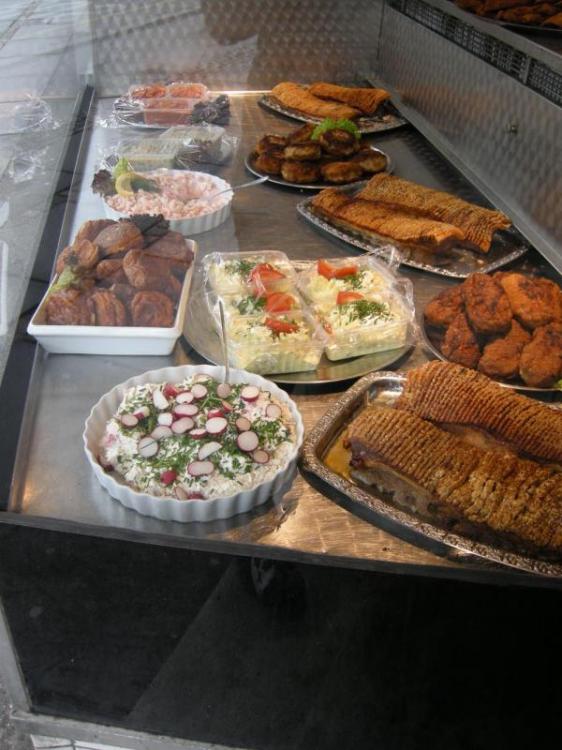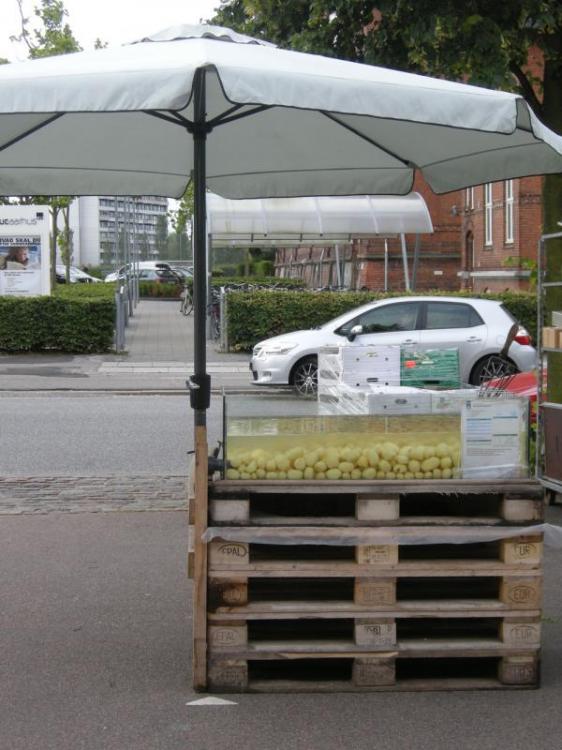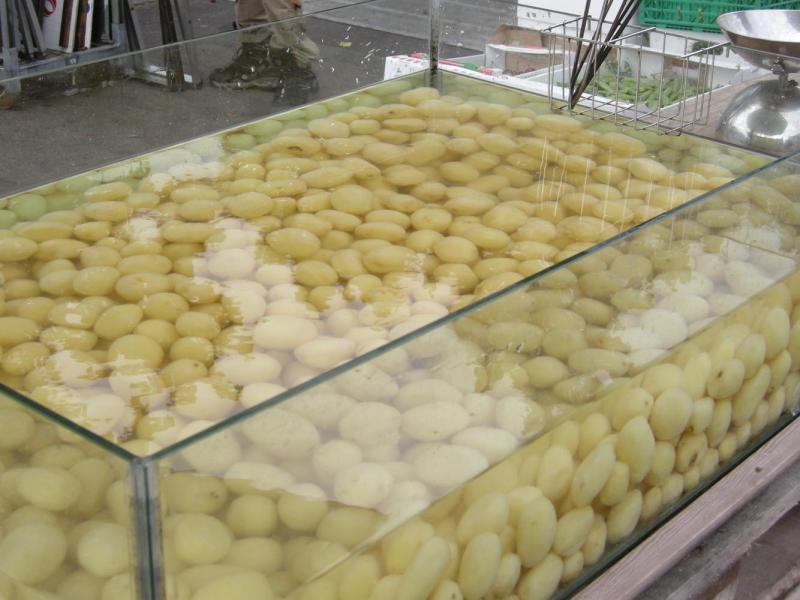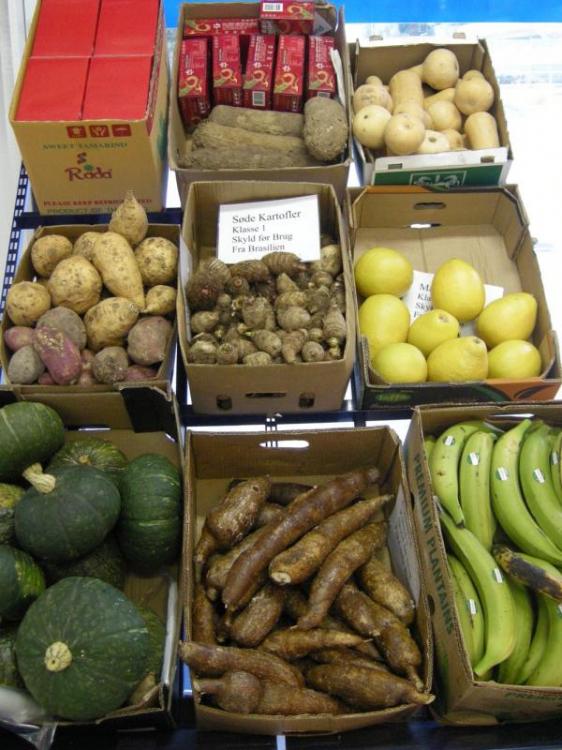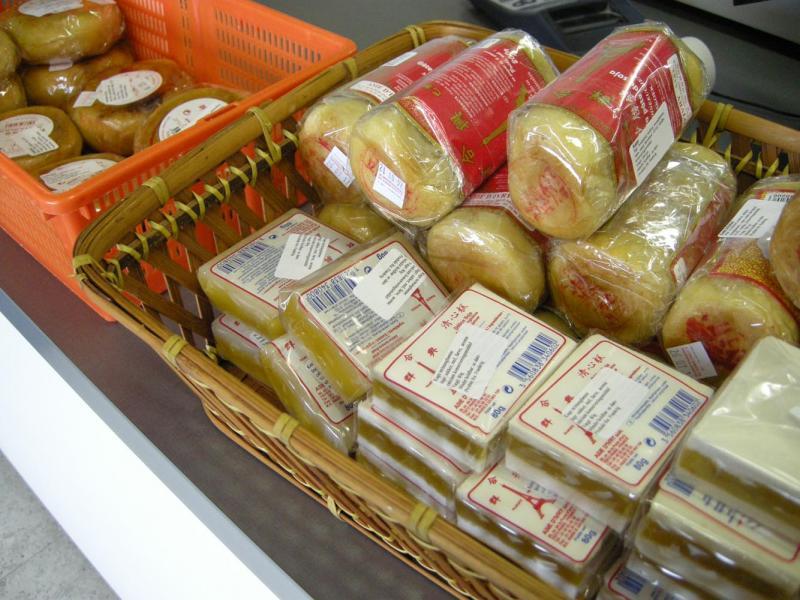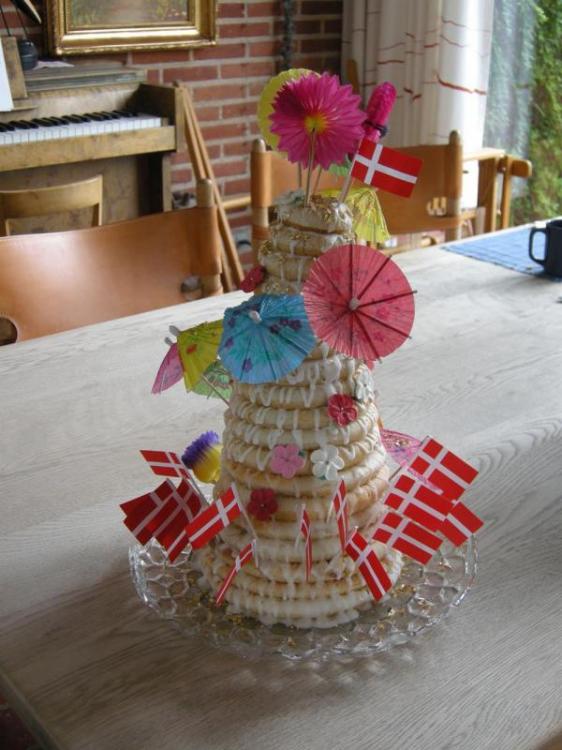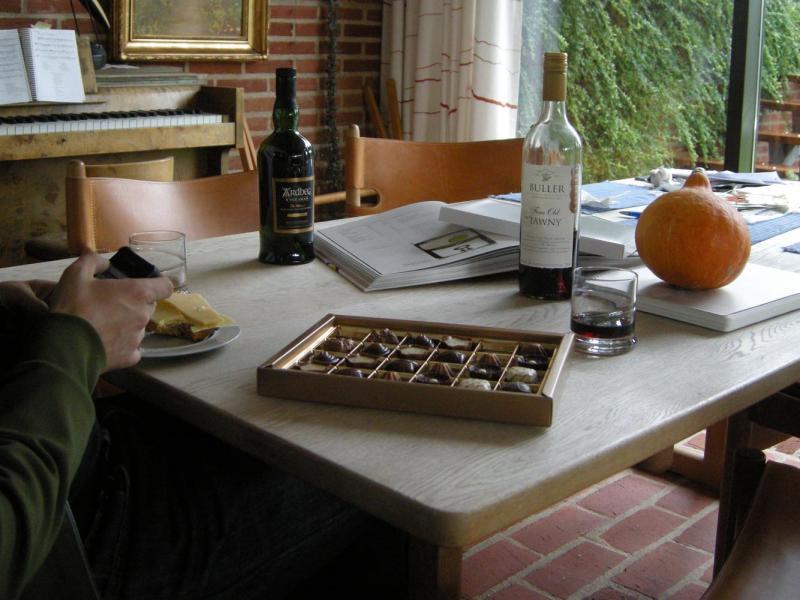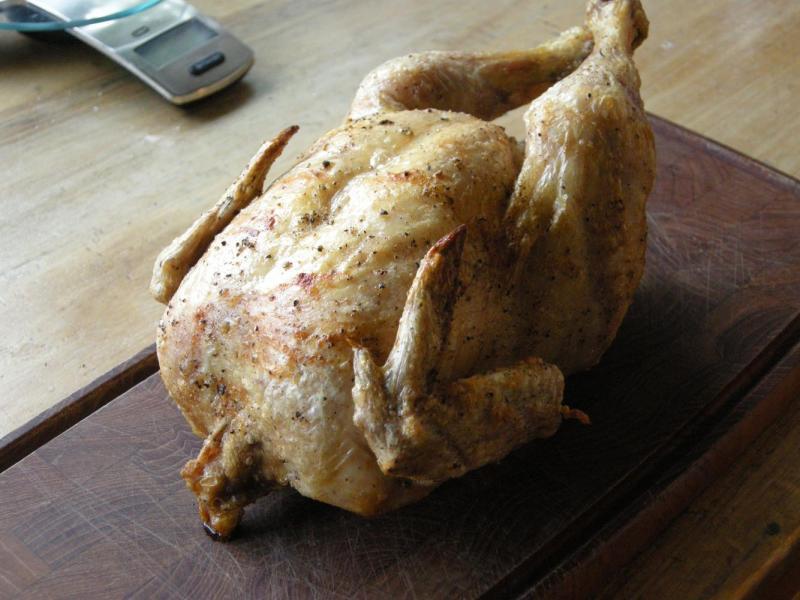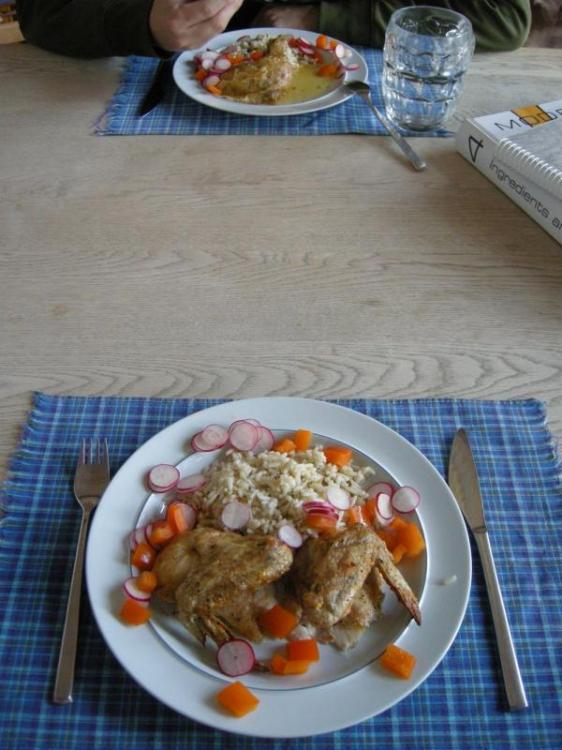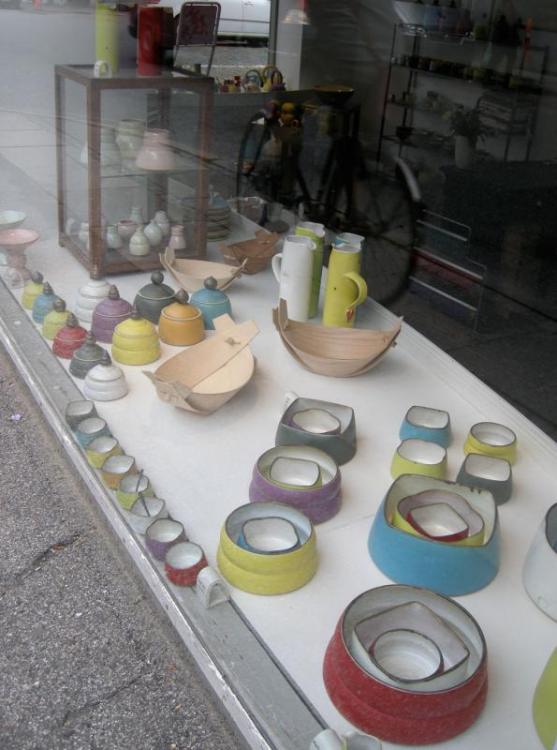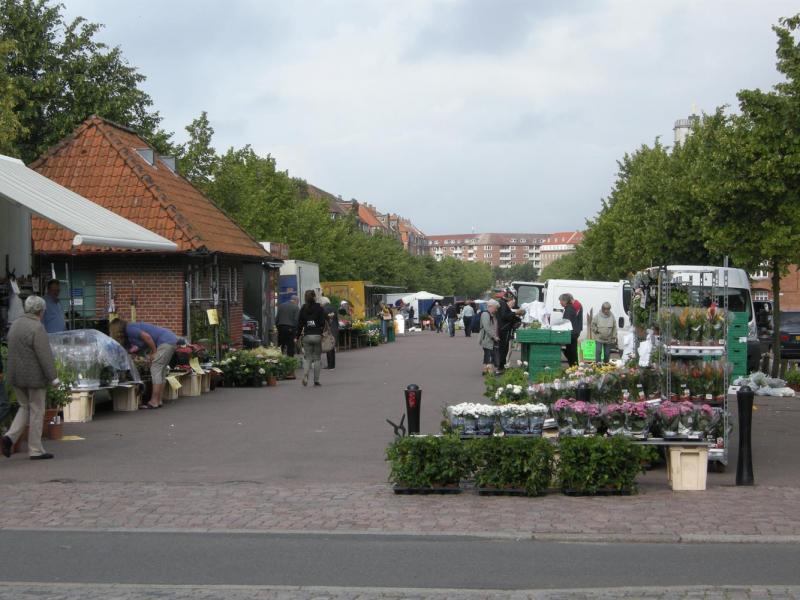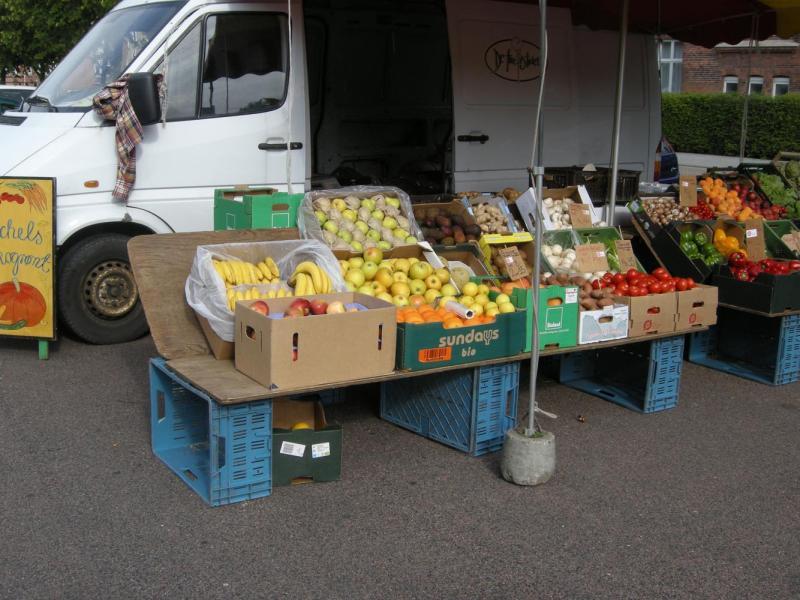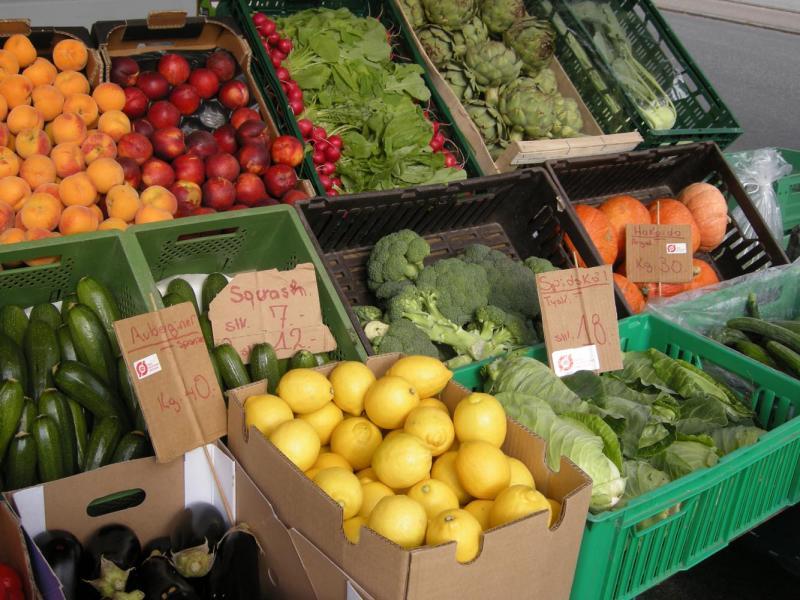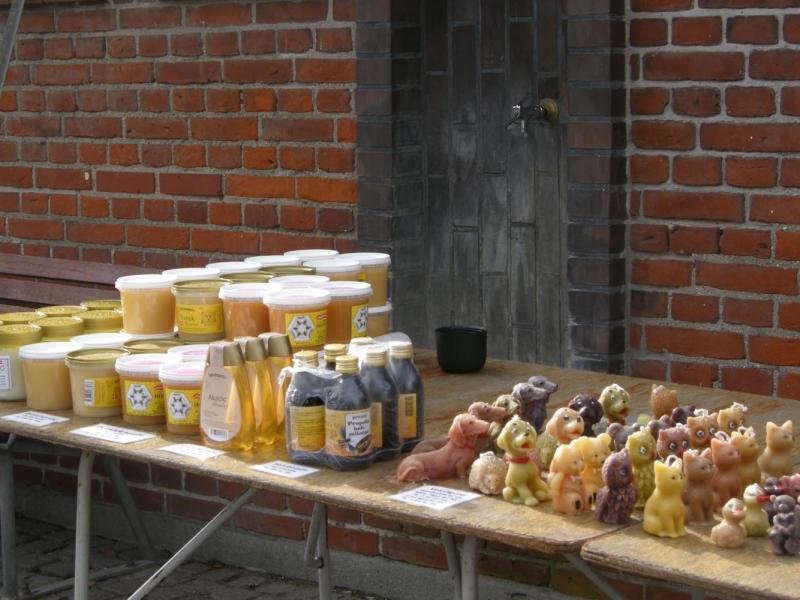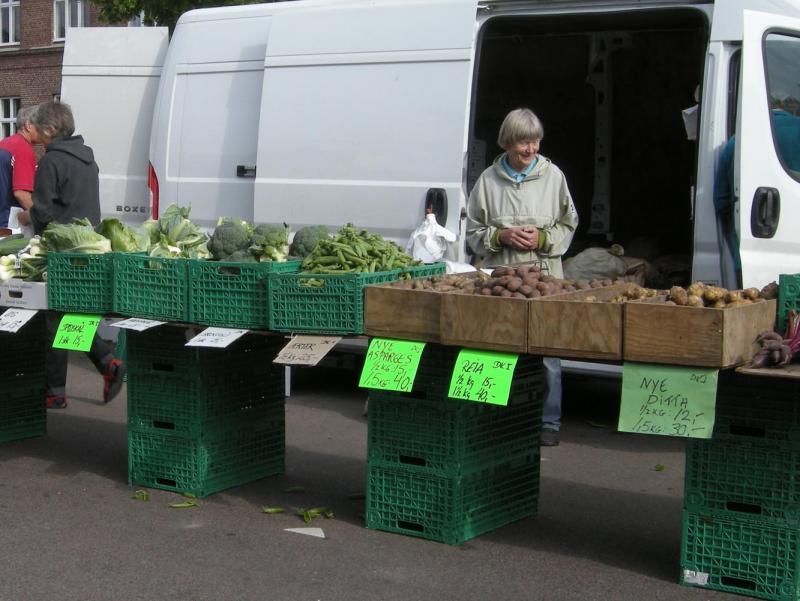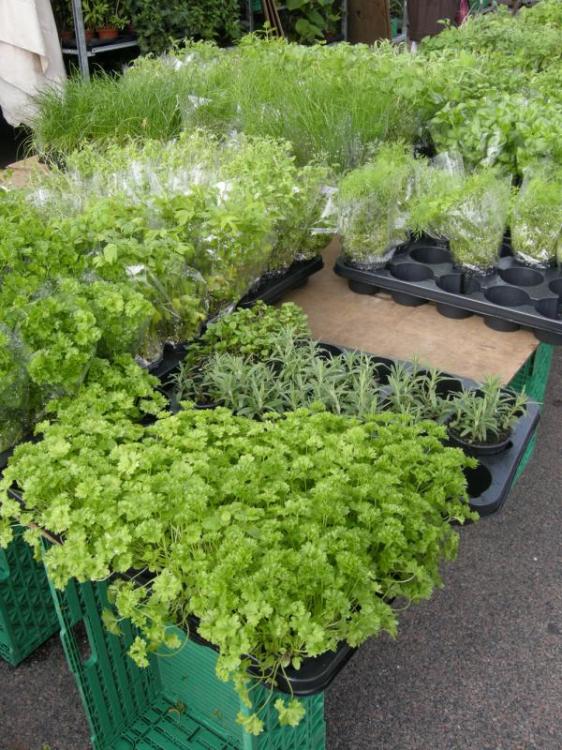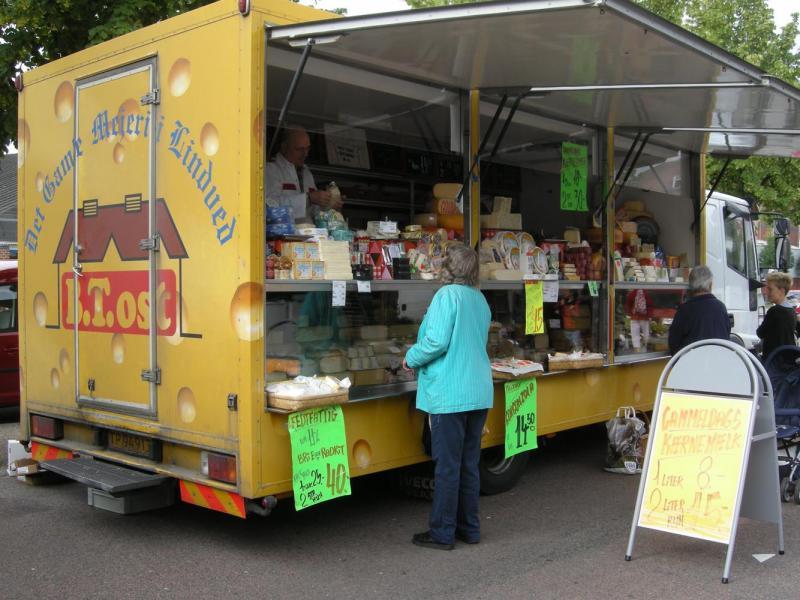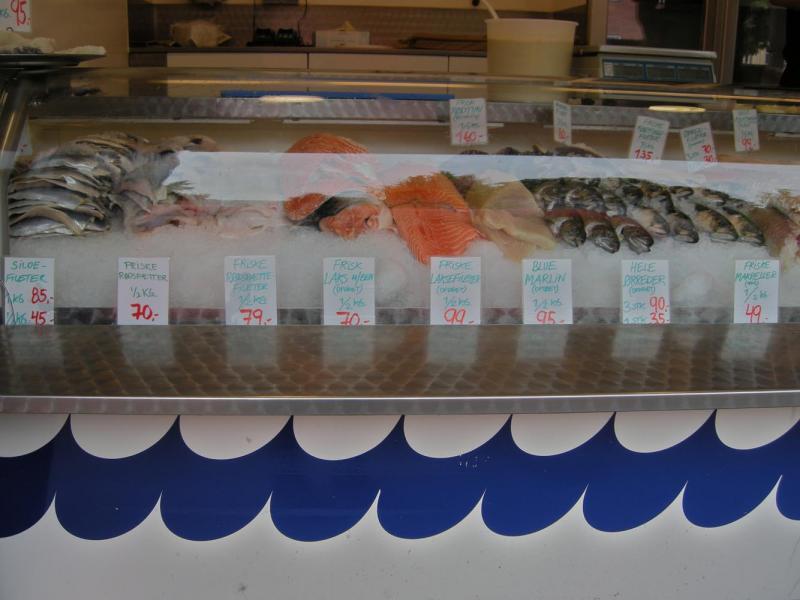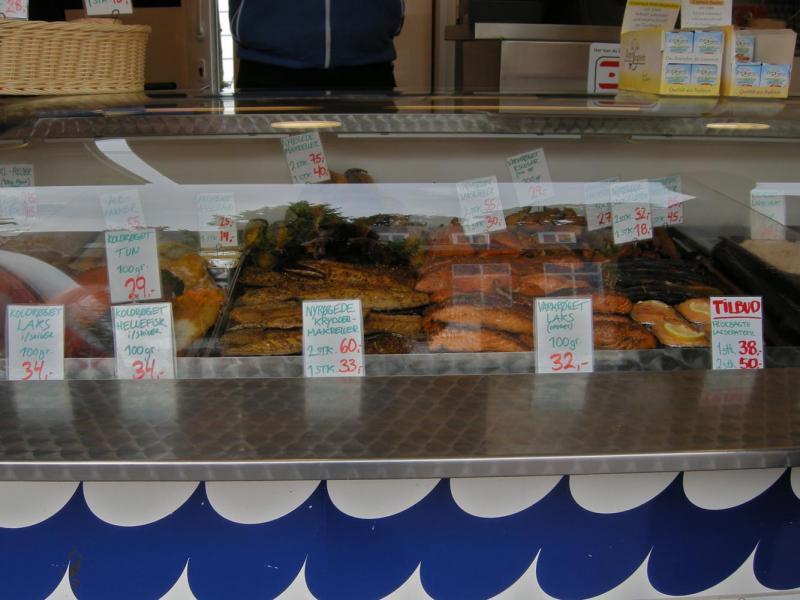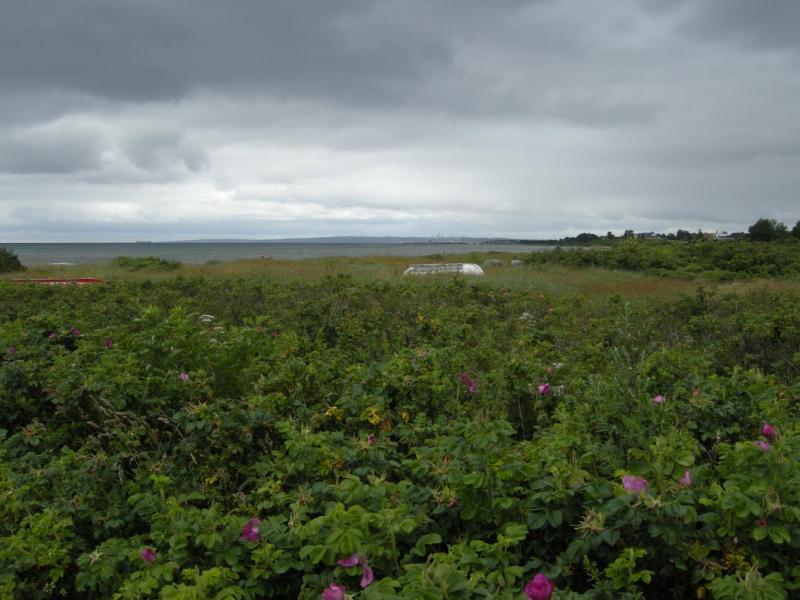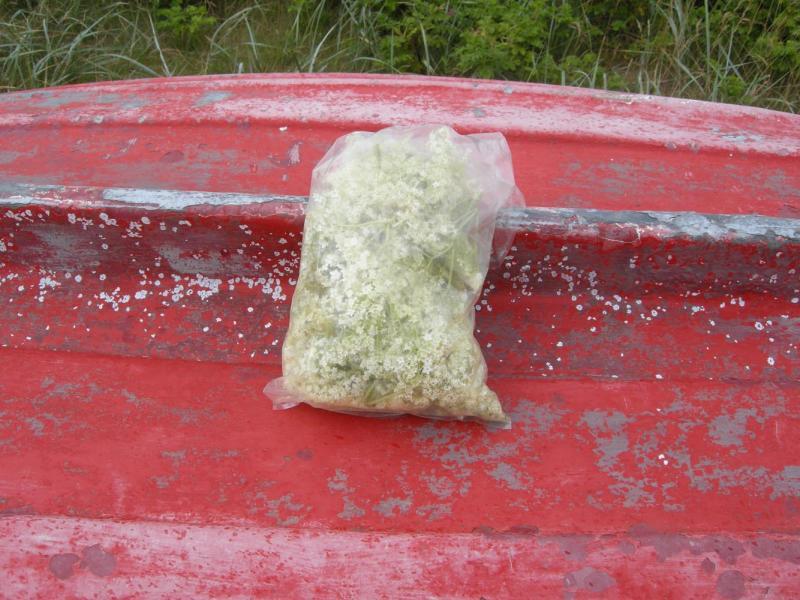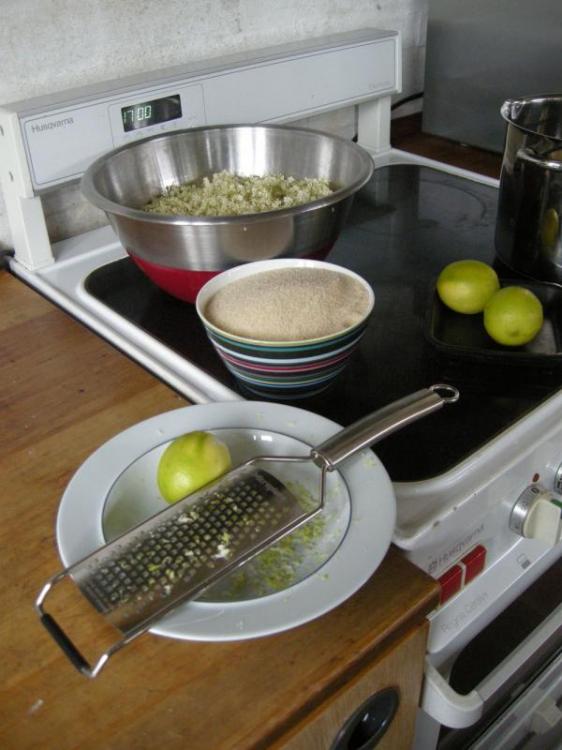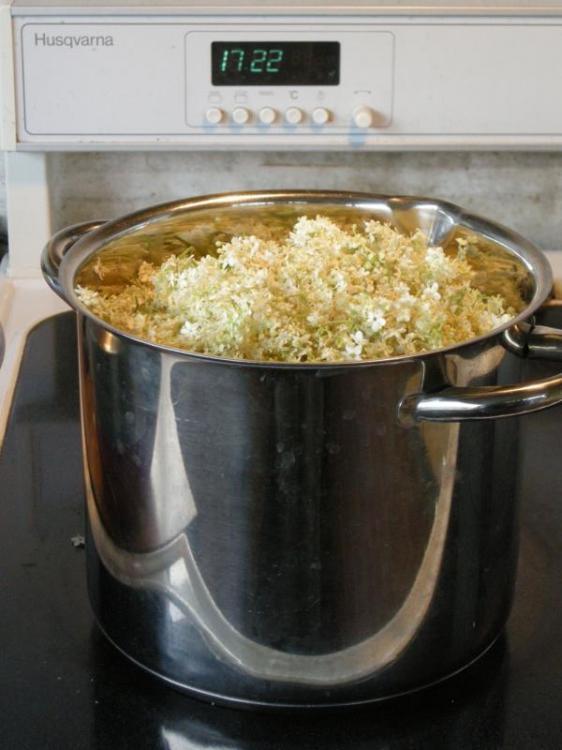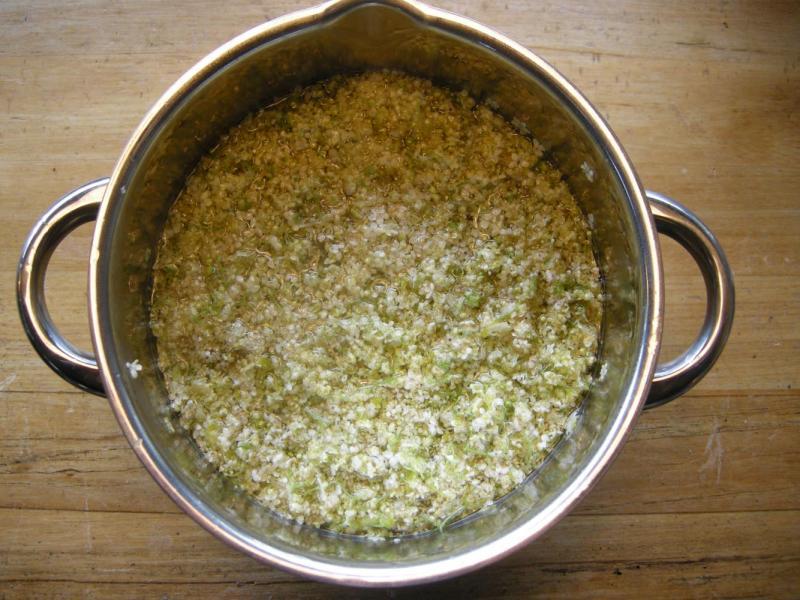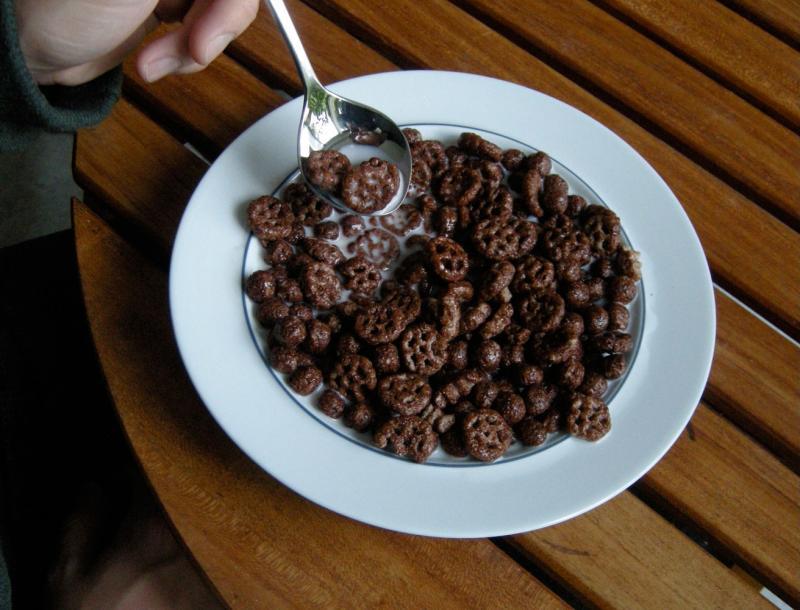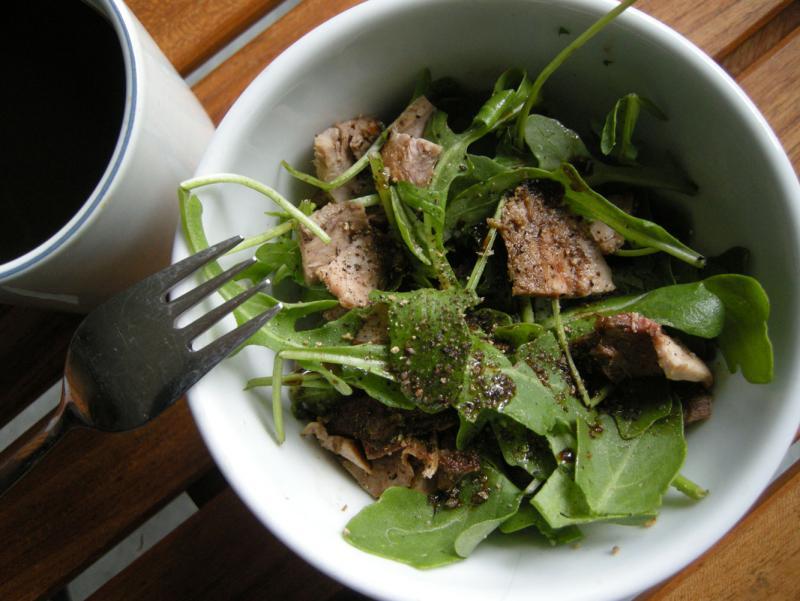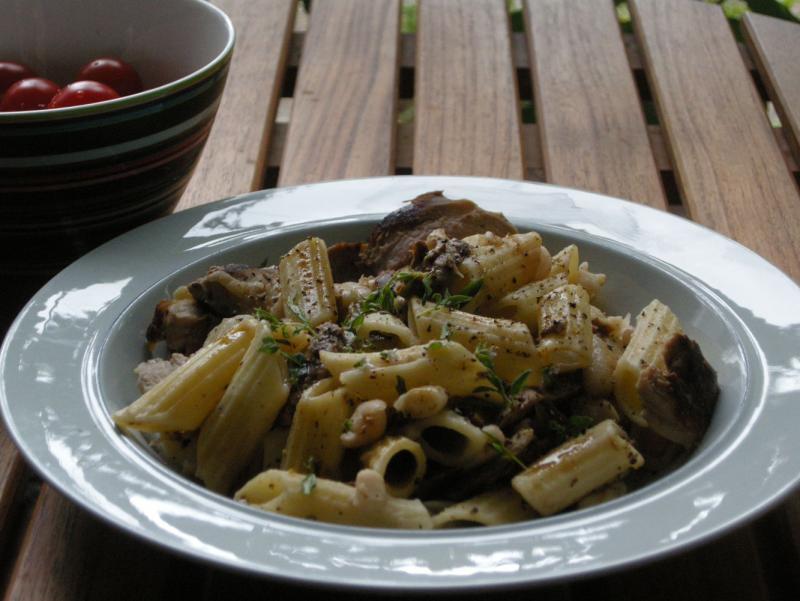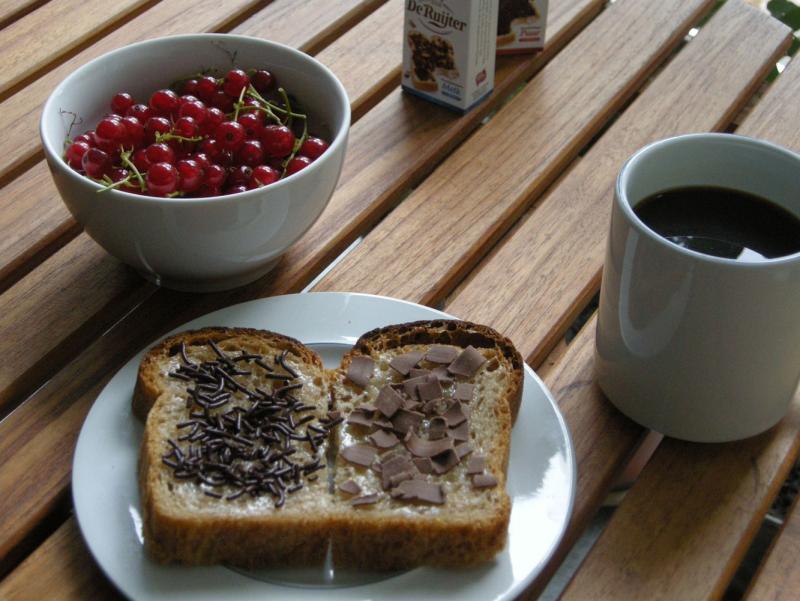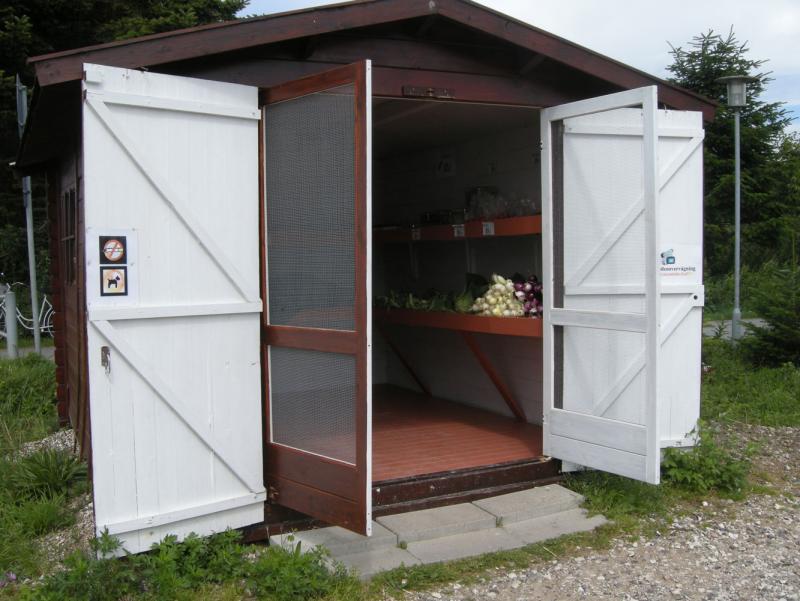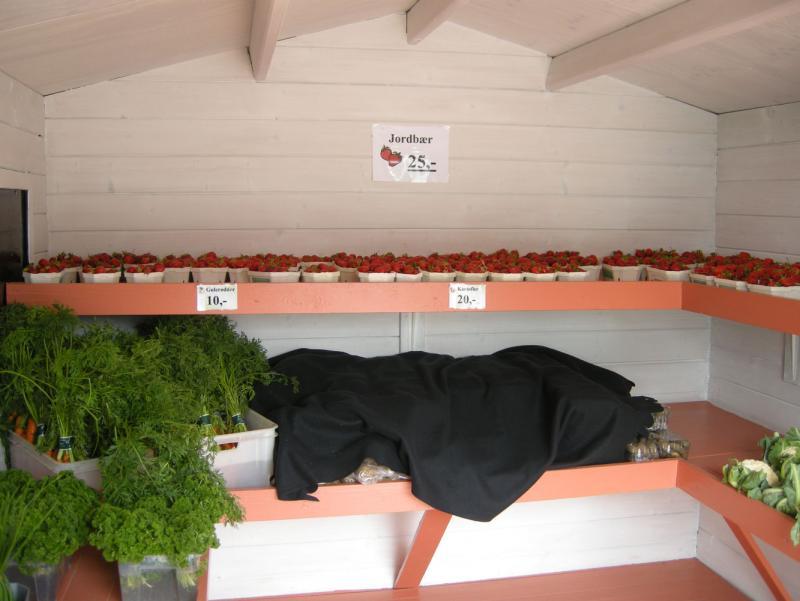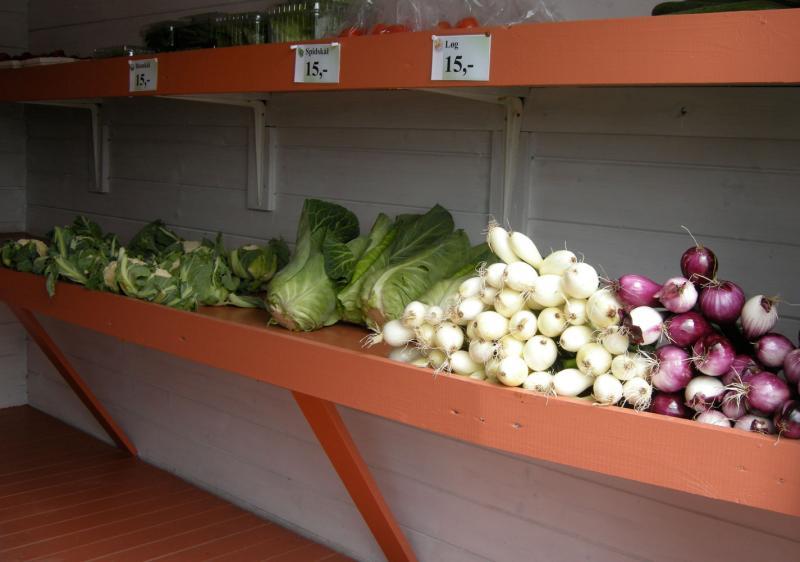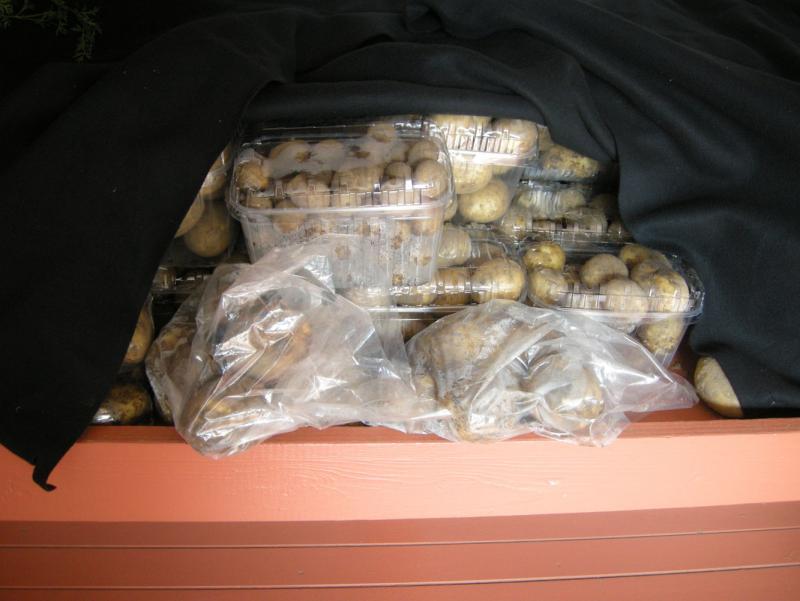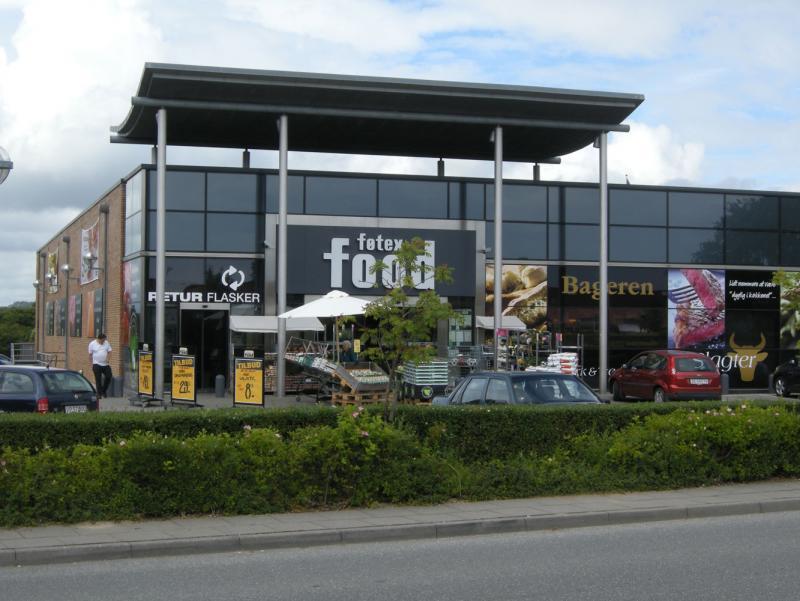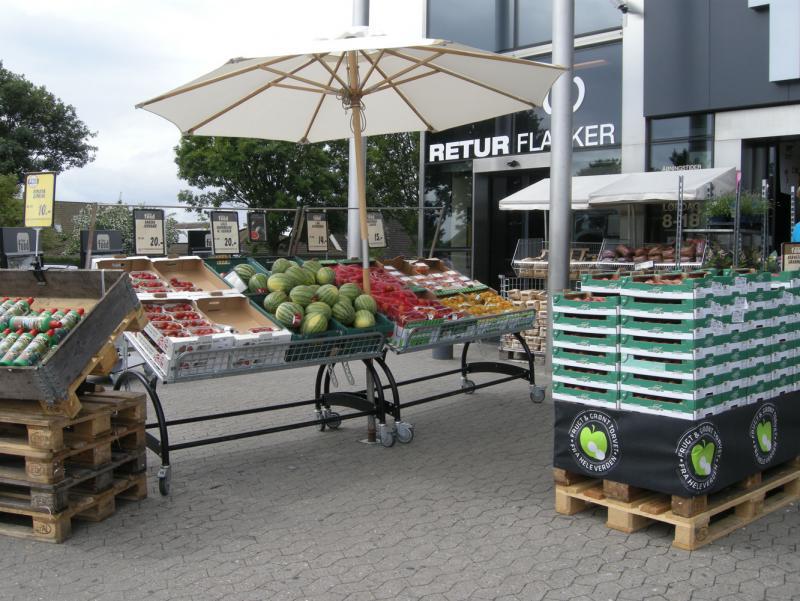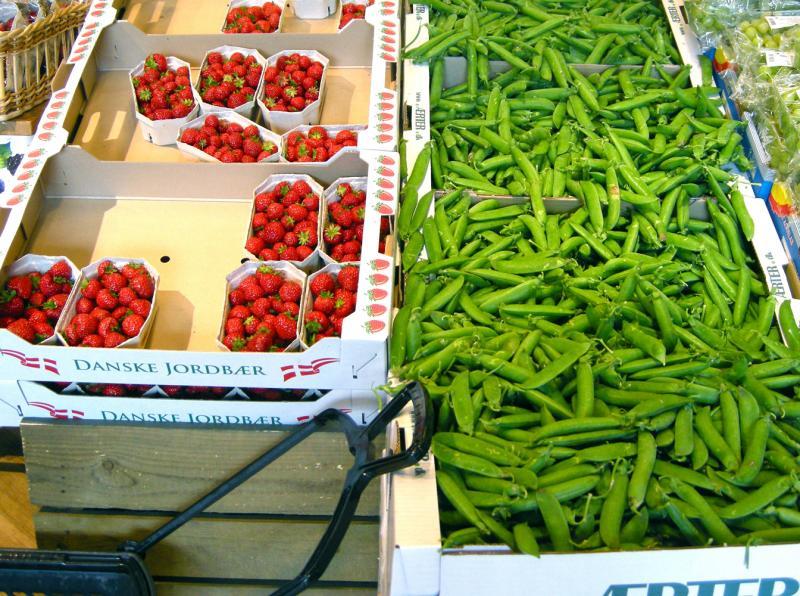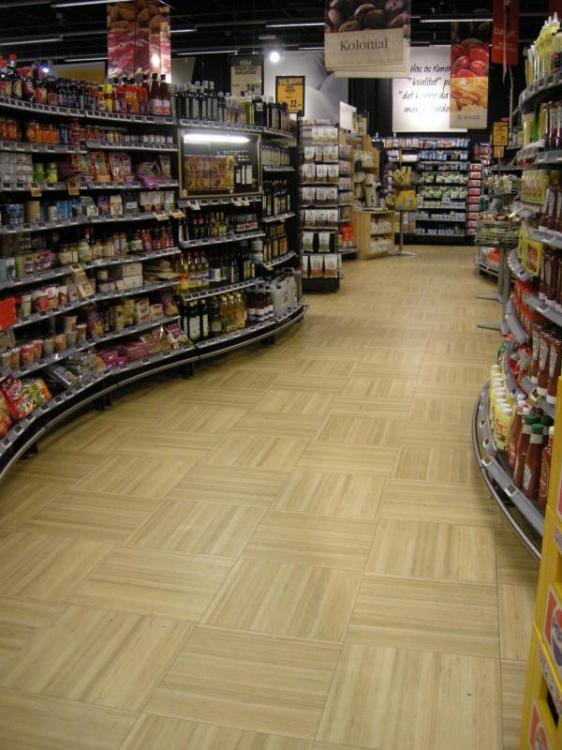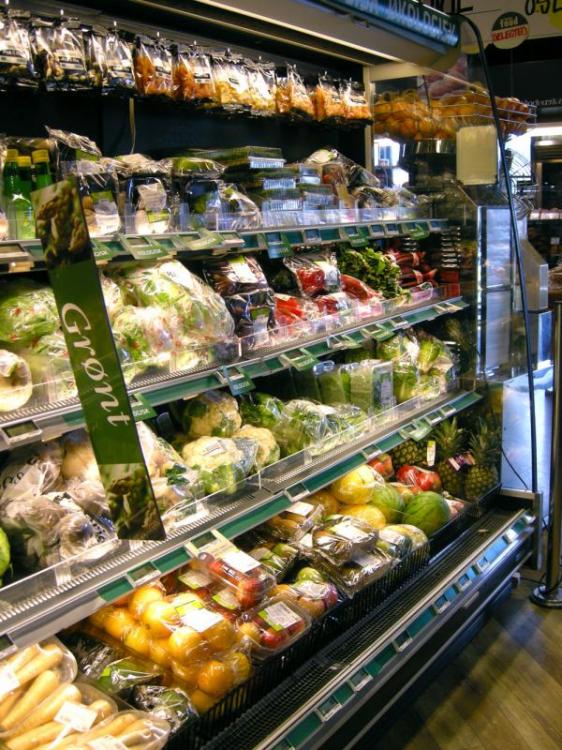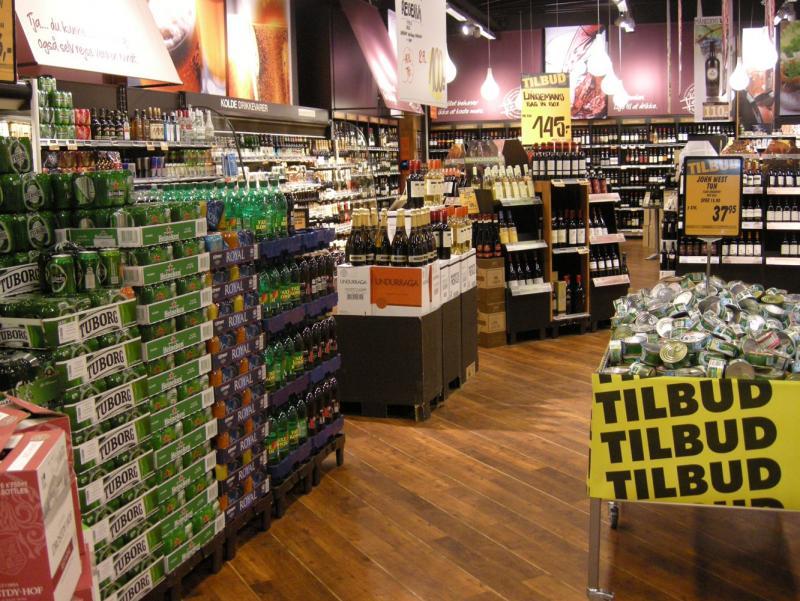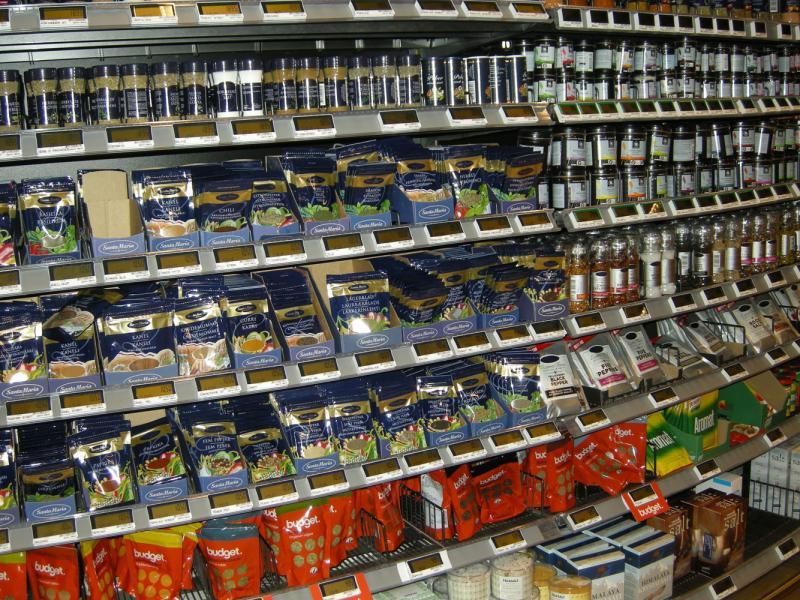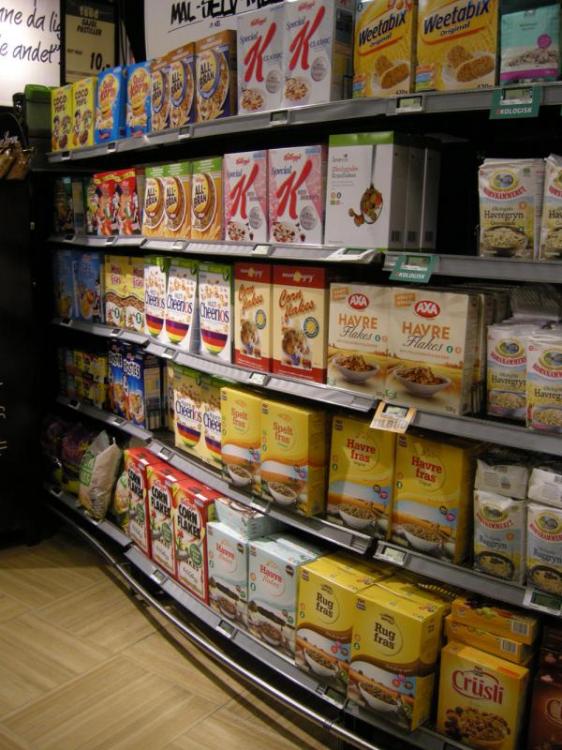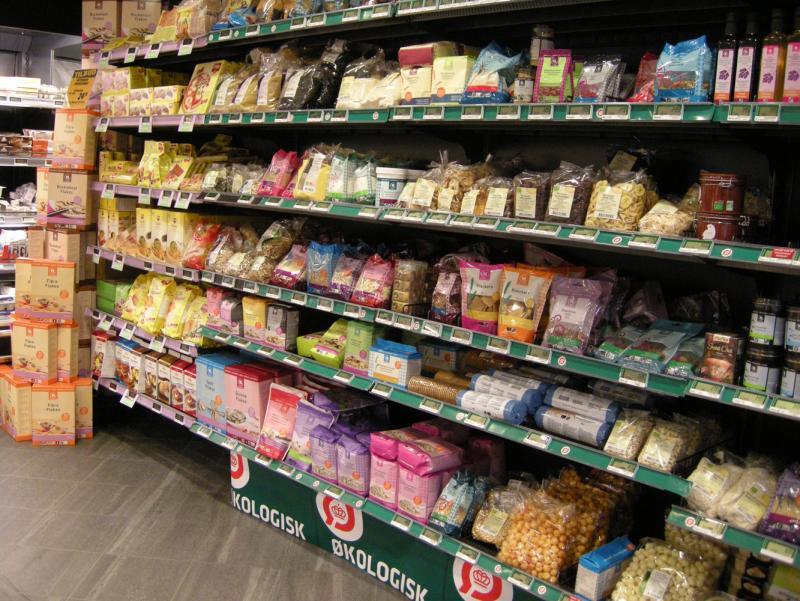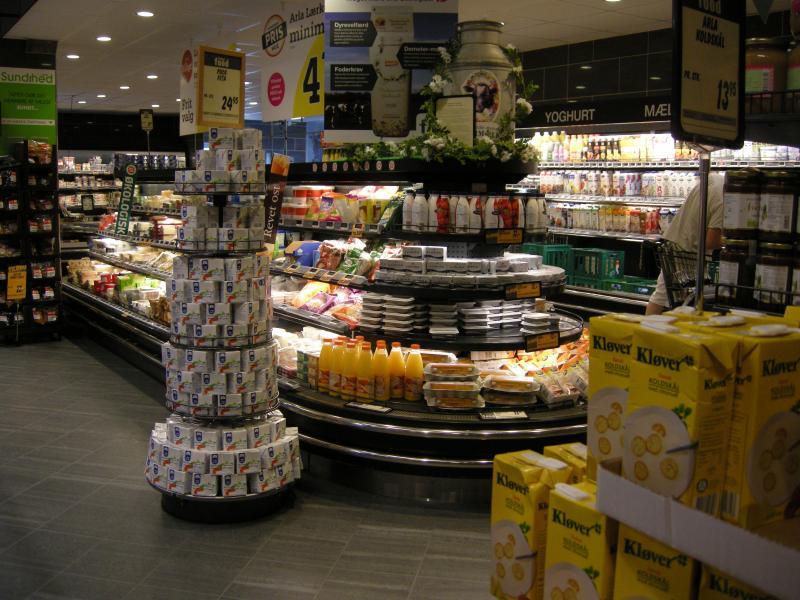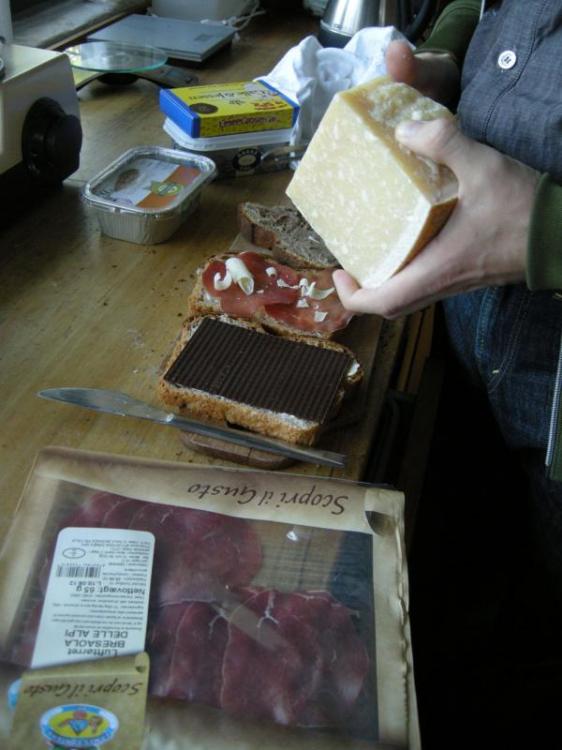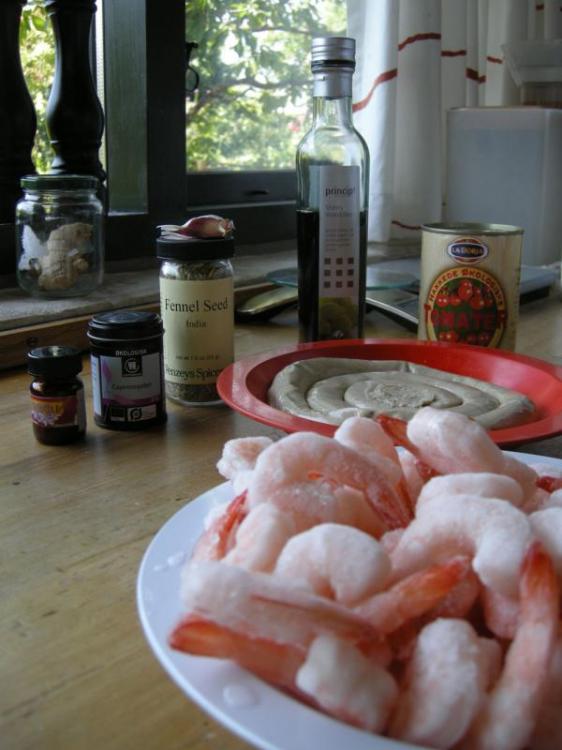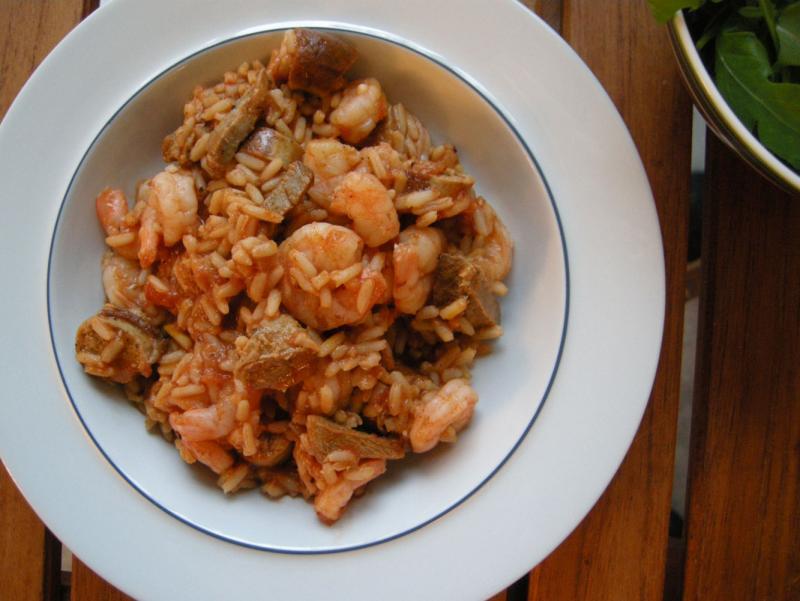-
Posts
7,657 -
Joined
Content Type
Profiles
Forums
Store
Help Articles
Everything posted by Mjx
-

eG Foodblog: Mjx (2012) – Elderflowers, Strawberries, and Game
Mjx replied to a topic in Food Traditions & Culture
Thanks! I've seen such shops here and there, but not very often, and I can only think of one (maybe) around here. The chicken was DKK44/1200 g (given the current exchange rate, that's USD7.21/42 oz.); the ground pork and veal mix I got for today's frikadeller was DKK40/500 g (USD6.55/17.6 oz); a fifth of that is sales tax, by the way. -

eG Foodblog: Mjx (2012) – Elderflowers, Strawberries, and Game
Mjx replied to a topic in Food Traditions & Culture
Anna, for this evening, I'm going to make frikadeller! These are very traditional for summer, and straightforward to make. I think. I've never made them before, since I've always made polpette, the Italian version (from The Splendid Table). This should be interesting. I wanted to get a bit of background on the subject, and my boyfriend's mother generously delved into her substantial library of cookbooks. I settled on three popular cookbooks: Alfas Kogebog [‘Alfa’s Cookbook’] 1925, vol 1, pp 121-122; (‘Alfa’ was a brand of margarine); Lærebog i Huslig økonomi [‘Textbook for Home Economy’, my boyfriend’s mother’s home economics schoolbook from the 4th to 9th classes, and given as a gif to be used after graduation], 1961, p 154; Claus Meyer et al.’s Ny Nordisk Hverdagsmad [‘New Nordic Everyday Food’], 2011, p 101. The ingredient lists give some idea of how frikadeller have evolved over the past 87 years: 1925 Alfas Kogebog (The book notes that 500 g of prepared meat mixture serves 4–6) 1 kg veal/pork (topside/round [inderlår], brisket [bov], or neck/chuck [mellemskært]) 250 g kidney fat (probably suet) or fresh pork fat 250 g flour 4–6 eggs Salt, white pepper, grated onion OR 1 kg beef (topside/round) 175 g fresh pork fat 250 g flour 3–4 eggs Salt, white pepper, grated onion 1961 Lærebog i Huslig økonomi 300 g beef, veal, or pork 40 g onion 4 tablespoons flour 1 teaspoon pepper 1 dl milk 30–40 g fat 2–3 dl water Kulør (caramel colour) and salt for the sauce 2011 Ny Nordisk Hverdagsmad 400 g ground veal and pork belly Salt and pepper 1 onion 120 g potato 120 g multi-grain/coarse bread 2 eggs 2 dl 1.5% milk 4 teaspoons flour 2 teaspoons mustard 20 g butter, for frying 2 tablespoons cold pressed rapeseed oil, for frying The recipes have changed very little over time, and they all assume you’ll be grinding your own meat: the 1925 recipe calls for passing the meat through the grinder 9 times, by 1962 this is down to just twice, and today, a few seconds in food processor are called for. I'm not going to be grinding my own; there is a very elderly meat grinder laying about somewhere (or parts, at least), and no food processor. And I want to do a little research; with Harold McGee, Modernist Cuisine, and Cook's Illustrated at my disposal, there must be some tips I can come up with, to make these as good as possible. I'm also thinking 'lovage'; the Ny Nordisk recipe includes it in the dressing for the frikadeller, why not put them in the frikadeller themselves? Yesterday, I passed a shop that sells traditional Danish ready-to-eat dishes, but I decided to save the image for today: You can see three sorts of frikadeller (no idea what, though), flæskesteg (roast pork, the long thigs with the ridged tops), and various summer salads. -

eG Foodblog: Mjx (2012) – Elderflowers, Strawberries, and Game
Mjx replied to a topic in Food Traditions & Culture
The hokkaido shows up, seven images down! I wrapped up my shopping at an Asian shop (Thai, Vietnamese, Chinese, Japanese, a little Indian and Korean), where I picked up some palm sugar and toasted rice flour. They have a much broader selection of condiments, herbs, and spices than pretty much any other shop around, and some interesting produce and snacks. I do realize, though, that compared to similar shops (e.g. in the US and Australia), this one is tiny. When I got back to my boyfriend’s parents’ place, his mother had just completed a traditional kransekage for a friend’s sixtieth birthday party: In Denmark, ‘round number’ birthdays tend to involve major parties, the last one I went to lasted pretty nearly 24 hours. I'll talk some more about Danish food tomorrow; I don't make much, since it tends to involve a lot of potatoes and flour, and those don't work out so well for me (kransekage is actually one of the things I can eat with no problems, since it involves stacked rings of marzipan, and not much else). And suddenly, it was 18.00, and I needed to get dinner started. My boyfriend helped out by bringing me a box of chocolates, and convincing me to sit down for a small snack and a drink. I brought up the hokkaido (hokaido?) to keep us company, and so I could include it in one of the images (the thing that looks like a stunted, deformed pumpkin). Dinner: roast chicken with rice, bell pepper, and radishes, and strawberries with balsamic vinegar and black pepper. And more chocolates, whiskey, and port. Nope. Pretty common in China, too I wondered about that, I mean whether this was done anyplace else. Ah, but it's a particularly good winter squash! Really nice texture. That's one big bacterial culture! Is it refrigerated? Refrigerated? You must be joking! I'm continuously teased about my finicking hygiene habits (e.g. washing my hands before every meal). No idea why, but Danes just don't go for potatoes in their jackets. They usually go with peeled and boiled, and when those lovely little new potatoes are involved, it practically breaks my heart. Thanks! And my boyfriend says Thanks, too, and is incredibly pleased someone noticed the greenhouse, since he spent ages bulding it. It's his own design, the frame is oak, and it's finished in with boat varnish (because it's so damp here). Mostly, I use it in place of potato, because potatoes are a bit of a disaster for me. the texture is very similar, and the flavour is pretty neutral. This one is going to be part of a soup and/or a puree. -

eG Foodblog: Mjx (2012) – Elderflowers, Strawberries, and Game
Mjx replied to a topic in Food Traditions & Culture
On Wednesdays and Saturdays there is an outdoor market at Ingerslevs Boulevard, and since I needed a hokkaido, I figured I’d head out and see whether I could find one. On my way, I passed this shop, which sells bread trugs that I seriously covet: Since today is both rainy and in July (possibly the most popular holiday month in Denmark), the market was a bit sparse, both in terms of vendors and shoppers: A lot of the vendors are simply retailers of many of the things you find in the shops (this stand sells only organic produce): He had hokkaidos, which I haven’t seen in the supermarkets or health food stores at this time (middle row, far right): Some of the vendors are very specialized, like the man who sells honey and a few other bee-derived products: I’d hoped the salt man would be there, but he’s probably on holiday. I’m a big fan of his smoked salt, which I initially thought silly and gimmicky, but now put in everything (including hot chocolate). Some are here to sell their own produce: Herbs in pots: The cheese truck: Fish, fresh and smoked (koldrøget is 'cold smoked'): And finally, the potato tank, to keep the peeled potatoes from turning brown: After this, I went to the Asian shop, so... a few more images to follow. -

eG Foodblog: Mjx (2012) – Elderflowers, Strawberries, and Game
Mjx replied to a topic in Food Traditions & Culture
On Wednesdays and Saturdays there is an outdoor market at Ingerslevs Boulevard, and since I needed a hokkaido, I figured I’d head out and see whether I could find one. On my way, I passed this shop, which sells bread baskets that I seriously covet: Since today is both rainy and in July (possibly the most popular holiday month in Denmark), the market was a bit sparse, both in terms of vendors and shoppers: A lot of the vendors are simply retailers of many of the things you find in the shops (this stand sells only organic produce): [iMAGE] He had hokkaidos, which I haven’t seen in the supermarkets or health food stores at this time (middle row, far right): Some of the vendors are very specialized, like the man who sells honey and a few other bee-derived products: I’d hoped the salt man would be there, but he’s probably on holiday. I’m a big fan of his smoked salt, which I initially thought silly and gimmicky, but now put in everything (including hot chocolate). Some are here to sell their own produce: Herbs in pots: The cheese truck: Fish, fresh and smoked (koldrøget is 'cold smoked'): [iMAGE] [iMAGE] And finally, the potato tank, to keep the peeled potatoes from turning brown: [iMAGE] [iMAGE] After this, I went to the Asian shop, so a few more images to follow. -

eG Foodblog: Mjx (2012) – Elderflowers, Strawberries, and Game
Mjx replied to a topic in Food Traditions & Culture
Kerry, I'm impressed that you recognized it as a Rösle from the small part of it that showed in the image. The mill is brilliant, I love it! I use it most for tomatoes, but hokkaido, potatoes, and quinces also pass through it pretty often (my boyfriend's mother borrows it, too). -

eG Foodblog: Mjx (2012) – Elderflowers, Strawberries, and Game
Mjx replied to a topic in Food Traditions & Culture
I think Mjx is here per the OP: One of the owners of Cafe Katja, here on the lower east side of NYC, is from Austria, where his family has an elderberry farm. There's often an item or two on the menu containing them, usually a cocktail, sometimes a food course - always delicious. I'm pretty sure I've eaten there, and I'm racking my brains to remember what I ate. I'm pretty sure I missed the elderflower options completely, though. Are these all from the flowers, or the berries, too? -

eG Foodblog: Mjx (2012) – Elderflowers, Strawberries, and Game
Mjx replied to a topic in Food Traditions & Culture
This morning is a coffee and a sprint out the door to do some shopping, so, pictures later. -

eG Foodblog: Mjx (2012) – Elderflowers, Strawberries, and Game
Mjx replied to a topic in Food Traditions & Culture
Denmark isn't very focused on food culture, which makes it difficult to find anyone who knows much about anything more then the currentlty widely available dishes. Germany and Denmark seem to share certain things (prevalence of sausage/pork, potatoes), but most of the Germans I know have complained loudly about Danish food. I don't tolerate spelt. But I don't have celiac disease, either; I don't know what the problem is, but it seems to be a generalized inability to handle a lot of starches. However, spelt is delicious (it's a form of wheat, and tastes like it, only more so), and handles like wheat (it's fairly high-protein, about 11 or 12%, according to the bags I buy) My recollection is that elderberries are mostly seed, and not that much in the flavour department, but whatever the reason, no one seems to worry about it much (quite few elderberries do show up, since the bushes are often really tall, and the topmost flowers are pretty much always left). I was wondering whether anyone was going to bring that up! -

eG Foodblog: Mjx (2012) – Elderflowers, Strawberries, and Game
Mjx replied to a topic in Food Traditions & Culture
I went down to the water, where there are quite a few elderflower bushes growing, to see whether there were any elderflowers left. It's been a bit overcast today. I needed 40 to 50 flower-heads, or, according to the one recipe that gave weights for everything, half a kilo. Eventually, found some bushes that still had flowers that were reachable, if I didn’t mind pawing through nettles and thistles. I’d dressed accordingly, and forged ahead. I foraged further, and eventually managed to get 50 flower-heads, although some were a bit small. Fortunately for me, when I scrambled out of the shrubbery and onto the main road, my hair full of twigs, the various passers-by didn’t give me a second look; the bag of flowers I was clutching told the entire story. The next job was to pick all the florets off the main stems, since the stems supposedly make the concentrate bitter. My haul weighed 320 g, and took about an hour to pick through: I really love the way elderflowers look, I find them incredibly frothy and festive, the way excellent champagne would look if it was a flower. I used 2 L water, 500 g sugar (half the traditionally called-for amount for this amount of water and flower-heads), the zest and juice of 3 limes (I find their flavour more interesting than lemons’), about a tablespoon of citric acid (the scale died on me while I was weighing it), and a pinch of salt. I boiled the water, dissolved the sugar and salt in it, then added the flowers, and the lime juice and zest: It’s supposed to steep for 3 to 4 days, but I can’t find any explanation of why so long; the flowers go into nearly-boiling water, and they’re both fresh and very small (no more than 0.5 cm across, and many are smaller), so a long steep seems unnecessary. I’ve decided to taste it tomorrow morning, and if I like where it is, I’m going to filter, regardless of precedent. At this point, I realized that I needed to get going with dinner, and since there wasn’t much time, I went with larb: -

eG Foodblog: Mjx (2012) – Elderflowers, Strawberries, and Game
Mjx replied to a topic in Food Traditions & Culture
Thanks! And I know what you mean: I watch people eating solid breakfasts at the crack of dawn, and cannot figure it out. Even in Europe -

eG Foodblog: Mjx (2012) – Elderflowers, Strawberries, and Game
Mjx replied to a topic in Food Traditions & Culture
Today’s plan was to collect elderflowers and make elderflower drink concentrate, one of the very traditional Danish things I like most. I noticed some great shrubs a couple of weeks back, and figured this would be the perfect week to do it. However, a friend has just informed me that I’m kind of late to the party, and most of the elderflowers are finished, and he did his... a couple of weeks back. Erm. Well, I’m going to take a look, anyway. Right after breakfast. Two takes on breakfast: My boyfriend's preferred chocolate/sugar bombs: and cold pheasant and rucola with balsamic vinegar: Part of the reason I usually skip breakfast, or have something that is not traditionally regarded as breakfast, is that I handle most starches fairly poorly, so many of the conventional Western breakfast choices don’t make for the greatest start to my day. Fortunately, the alternatives are fairly attractive (and they can out-do my boyfriend's breakfast in the 'You can't be serious factor', by several orders of magnitude, e.g. a Ritter Sport). -

eG Foodblog: Mjx (2012) – Elderflowers, Strawberries, and Game
Mjx replied to a topic in Food Traditions & Culture
Thanks! The pasta dish was improvised (I improvise a lot of the time), but it's the sort of thing that doesn't really need a recipe. I saw these (frozen) pheasant breasts in the supermarket, and thought they’d be a nice element in the pasta and bean dish I had in mind; the porcini came into the equation when I realized that I did not have a litre of stock in the refrigerator as I thought, in fact, I had none! There are quite a few recipes I use fairly often, but I usually make some changes to them. Pheasant (and various other frozen game) is usually available at this particular supermarket chain, and I'm fairly certain that it’s a by-product of canned hunting. You have to watch out for shot when you're eating it, or you can do really expensive things to your teeth. Also, my boyfriend's father hunts (of course, that’s seasonal), and right now there is some venison, some wild duck, and (I think) a pheasant in our freezer. Fresh game in shops is really expensive (so is rabbit, when it come to that). My Danish is best described as ‘entertaining’; it’s relatively fluent, but patchy and unreliable, and I still make some epic mistakes. I grew up bilingual, but we left Italy when I was young, and I haven’t spent any lengthy blocks of time there since, so my Italian is not as strong as it was, making English my strongest language. There are a lot of security cameras in Denmark! In this instance, a few security cameras are probably the most cost-effective option for minimizing theft, almost certainly cheaper than hiring someone to stand there (even minimum wage is high, here), and the odds of anyone stealing a bunch of vegetables aren't that significant. Plus, there is a bench nearby, which is usually occupied by at least one eagle-eyed resident from the senior housing centre next door, which is a sort of deterrent to anyone wanting to stroll in and nick some strawberries. I especially like lovage with game, chicken, and mushrooms, and usually include it when I make stock from these. Sometimes, I add the leaves to the mix when I'm deglazing a pan for a sauce. I find it works nicely with thyme, rosemary, bay leaf, cinnamon, cloves, and juniper berries (not all together!). Lovage is one of my favourite herbs, and I'm currently in luck: there are a couple of extremely vigorous plants of it right outside the kitchen window, so I've been using it with a pretty free hand. Thanks! We had the cherry tomatoes you see in the corner, and that was it. I've been tending towards very compact, simplified meals since we've been staying with my boyfriend's parents, usually just a main dish and a (usually raw) vegetable. The Danish bread chocolate (the square-ish sheet on my boyfriend's bread) is plain/dark chcolate, and it's also available in a milk chocolate version that I've never tried. the Dutch bread chocolate (the things that look like cake decorations, on my bread) is both kinds: the ones on the left side of the bread are plin, the ones on the right are milk (the difference in these is mostly textura, though). -

eG Foodblog: Mjx (2012) – Elderflowers, Strawberries, and Game
Mjx replied to a topic in Food Traditions & Culture
Dinner was penne and cannellini, with pheasant, porcini, lovage, and thyme: I'd love to say the lighting is meant to be atmospheric, but I just forgot to turn on the light. -

eG Foodblog: Mjx (2012) – Elderflowers, Strawberries, and Game
Mjx replied to a topic in Food Traditions & Culture
Do you eat much fish? I remember from Sweden a long time ago that rodspette is very nice. Actually, as I was walking away from where the fish guy wasn't, I realized I wouldn't have got anything, anyway: fish is currently proscribed, because my boyfriend's father hates the smell of it cooking! -

eG Foodblog: Mjx (2012) – Elderflowers, Strawberries, and Game
Mjx replied to a topic in Food Traditions & Culture
Eventually, I had some breakfast. This bread chocolate is not so good. Not very chocolaty, although I kind of like the texture. Crunchy. That’s honey under the chocolate, in case anyone was starting to believe I eat healthily. No butter, because I don’t like my butter in combination with anything else (on bread, that is). Then, I went out shopping. I saw this sign (‘The fish man is here today’), and thought I’d get some fish (or at least nice shots of fish). However, the sign was deceptive, since there wasn’t any indication of anyone selling fish. No idea what that was about. At my next stop, there is a sign that says, ‘New potatoes, vegetables, strawberries, peas’, outside a small, unmanned hut where you can get produce, and pay by putting your money in a tin just inside the door, sort of on the honour system. Apart from the two or three security cameras (out of frame). New potatoes, strawberries, and green peas are the Danish summer produce trifecta, and I thought some peas would be nice. Except, there were no peas. Under the dark cloth are potatoes (the dark cloth keeps them from sprouting): I thought about getting some strawberries, but decided against it, since I had more shopping to do, and didn’t want them to get smashed. Next, I pushed on to Føtex, the higher-end chain of a major Danish supermarket conglomerate. Here, there were peas, although I only got a few, since they were on the large side, and those can tend to be a bit stony: They have a small selection of organic (‘øko’) produce, where I was hoping to find some EU garlic (I didn’t, but at least it didn’t come as a surprise). Towards the back they have wine and beer: The aisles are curvy, which may or may not serve a specific function, but I like the effect: I mentioned that the selection of herbs and spices is a bit restricted, and this is pretty much it (the light is not too good here): There is a fair amount of duplication among the herbs and spices: Santa Maria (dark-blue labelled items) is about the most widely distributed brand, Budget is Føtex's budget store brand (Princip is their high-end one), and the herbs in tins are by Urtekram, a specialty/organic brand (I like the tins, since they protect the contents from light). One thing that always surprises me about US supermarkets is the vast number of breakfast cereal offerings; here, they occupy just one side of a short aisle. Muesli and various types of oats are popular, and Kellogg and Quaker brand sugar crappies make up the rest of the selections: There’s a small section of gluten-free items, and some organic ones (others found in the various other sections, too): The dairy section is fairly substantial. Naturally, I forgot to take a picture of the unusually wide variety of cultured milk products, something quite usual here (in the US, there are quite a few brands, but usually not that much variety; here it’s the opposite). I'm planning more interesting shopping tomorrow/Wednesday. And now, I need to figure out dinner. -

eG Foodblog: Mjx (2012) – Elderflowers, Strawberries, and Game
Mjx replied to a topic in Food Traditions & Culture
Precisely. It's great stuff. I had another kind today, as an experiment, and can't say I was thrilled. -

eG Foodblog: Mjx (2012) – Elderflowers, Strawberries, and Game
Mjx replied to a topic in Food Traditions & Culture
I have no idea. I think putting margarine or butter under prosciutto or bresaola is barbaric, but I'm not eating it, so I try to remain calm. In Denmark, a major selling point for margarine is that it spreads nicely, and doesn't tear your bread. But when I've kept the butter on the counter, so it's nice and spreadable, he's said 'No thanks', and still reached for the margarine. I guess he's just used to the flavour. Is the book dedicated to baking with spelt flour? I've always treated it precisely the same way as plain wheat flour, although I'll if a recipe calls for cake flour, I'll cut it with a bit of rice flour, since the protein content is pretty high. I don't know that Gabriele Bonci is that much of a celebrity outside of Rome or Italy. In any event, his pizza is great, and according to knowledgeable expat writer and Roman food guru Katie Parla, the book is worthy. Weinoo, that's why I put celebrity in quotes, but since mjx has a connection to Italy, I thought she might know who he was. Sorry i wasn't clear though. I am not convinced by some of his weird pizza topping combinations, but that's just me. For example, licorice on pizza sounds vile to me. I do however like a lot of what he writes about the process. (and some other yummy combinations. ) Like I said, only my humble opinion. Still love his pizza. Can't wait for his bakery. (p.s. he's on national TV in Italy every week so may be at least somewhat famous outside rome. ) Mjx, Not at all dedicated to the flour. but he recommends it a lot. I am dying to try it and you've just convinced me further. Your bread looked wonderful. Ha! I don't feel so out of the loop for being unfamiliar with him, now. And if he's putting licorice on pizza... I don't know. I love both pizza and licorice, but it would take some serious threats to make me eat them together. -

NYT Articles on Food, Drink, Cooking, and Culinary Culture (2011– )
Mjx replied to a topic in Food Traditions & Culture
The article seems to kind of miss the point that should raise the most concern, which is that the important argument in favour of organic production is that (done properly) it reduces damage to the environment. Research on whether or not organic food is healthier for individual human beings is not at all conclusive, but there's no question that, since the biosphere is effectively a closed system, it has a limited capacity to absorb the various byproducts of food production. You overload the soil and water with certain substances, and things get unhealthy for everyone, regardless of what they're eating. Yet the article addresses this only briefly, half a dozen lines buried in the middle the article, discussing the (unsuccessful) atttempt to have the herbicide ammonium nonanoate added to the accepted organic list. Compared to other herbicides, ammonium nonanoate is pretty mild stuff, but when you okay one herbicide, you open the door to more aggressive ones (weeds tend to become resistant to herbicides; this is both aggravated by, and a cause of overspraying) that are more problematic, in terms of environmental impact: it becomes harder to say No. The possibility of a future in which crops that have been sprayed with, say, Roundup, being able to bear the 'organic' label is not an unreasonable concern, and who knows? it may be discovered that Roundup is fine for humans, after all. But it plays hell with the environment (in Denmark, for example, they're finding lots of it in ground water, and frog numbers are declining). Since we're kind of stuck on this planet, it'd be a good idea to try to make it as healthy a place to live as possible; loosening organic standards doesn't seem like an ideal step in that direction. -

"Neapolitan pizza has flown as high as it can go."
Mjx replied to a topic in Food Traditions & Culture
Add me to the 'it depends on too many factors to be an answerable question' crowd (e.g. I don't even consider a thick-crust 'pizza' to be pizza, but something derived from pizza). -

eG Foodblog: Mjx (2012) – Elderflowers, Strawberries, and Game
Mjx replied to a topic in Food Traditions & Culture
Is the book dedicated to baking with spelt flour? I've always treated it precisely the same way as plain wheat flour, although I'll if a recipe calls for cake flour, I'll cut it with a bit of rice flour, since the protein content is pretty high. -

eG Foodblog: Mjx (2012) – Elderflowers, Strawberries, and Game
Mjx replied to a topic in Food Traditions & Culture
I too am intrigued by this Nope. Or at least, not that I know of. I got the fennel seed (and a few other Penzeys items) in NYC, at the stand they had in Grand Central, to be exact, and I was not thrilled to discover that they're now gone. Especially since amazon doesn't seem to carry them, either (they show up in a search, but when you get to the page, it shows a brand called Ajika). A lot of herbs and spices are difficult or impossible to find here, and the quality isn't always what I'm looking for, so I tend to pick them up when I travel (on the other hand, things like vanilla bean and licorice powder are easily found in standard supermarkets, and that makes me pretty happy). -

eG Foodblog: Mjx (2012) – Elderflowers, Strawberries, and Game
Mjx replied to a topic in Food Traditions & Culture
Most weekday mornings run along similar grooves. Usually, my boyfriend brings a packed lunch to work; these often show a certain amount of cultural cross-pollination: The use of margarine, the bread chocolate, and the leverpostej (liver paste) are traditionally Danish, and the bresaola and the Parmigiano (that block was brought back from our last trip to Florence, in March) bring Italy to the table. Normally, he has some sort of cold cereal for breakfast, but we ran out of milk, so today it is pretty much the same as his lunch: As I mentioned, I’m not much of an early breakfaster, so for now I just had coffee. However, there are newly ripe red currants in the garden, and some Dutch bread chocolate to be sampled, so, about elevenish, I'll be making sure those don't go to waste. -

eG Foodblog: Mjx (2012) – Elderflowers, Strawberries, and Game
Mjx replied to a topic in Food Traditions & Culture
Dante complained bitterly of the salt-containing bread he had to eat when he was in exile! Growing up, I heard various explanations for the lack of salt in Tuscan bread, but they seem to have gone in one ear and out the other; to me, it was ordinary bread, and the only reason I gave it any thought was because my parents insisted on only having the whole grain version, while I coveted the white bread. For me, the lack of salt emphasizes the wheaty fragrance, and it never strikes me as bland, perhaps partly because, like most Italians, I very seldom ate it straight. Usually, it was topped with something very intensely savoury (e.g. prosciutto, liver paste), for which it makes a perfect foil. On other occasions it appears in things (e.g. ribollita, panzanella), but again, these are so savoury that a saltless bread seems just perfect. ETA: Curious, I looked to see what the Italian wikipedia entry had to say about the absence of salt in Tuscan bread, and it does in fact note that Tuscan food is very flavourful, hence a neutral bread that throws these flavours into relief (it also includes a link to the Dante quotation bemoaning the anguish of having to eat other bread). -

eG Foodblog: Mjx (2012) – Elderflowers, Strawberries, and Game
Mjx replied to a topic in Food Traditions & Culture
Dinner; rice with chicken sausage, shrimp, and duck, with baby greens on the side: The raw sausage was kind of off-putting, but cooked, it was delicious, and definitely brought something to the dish.


